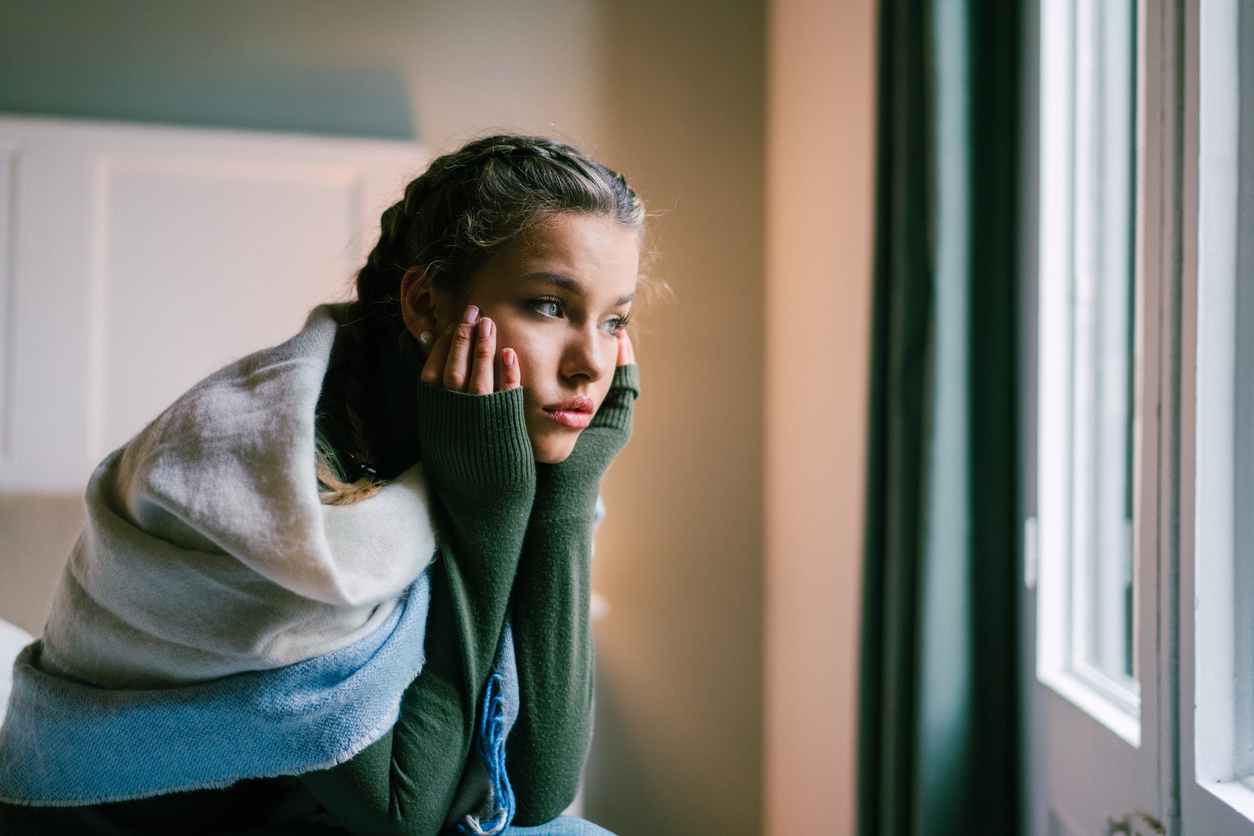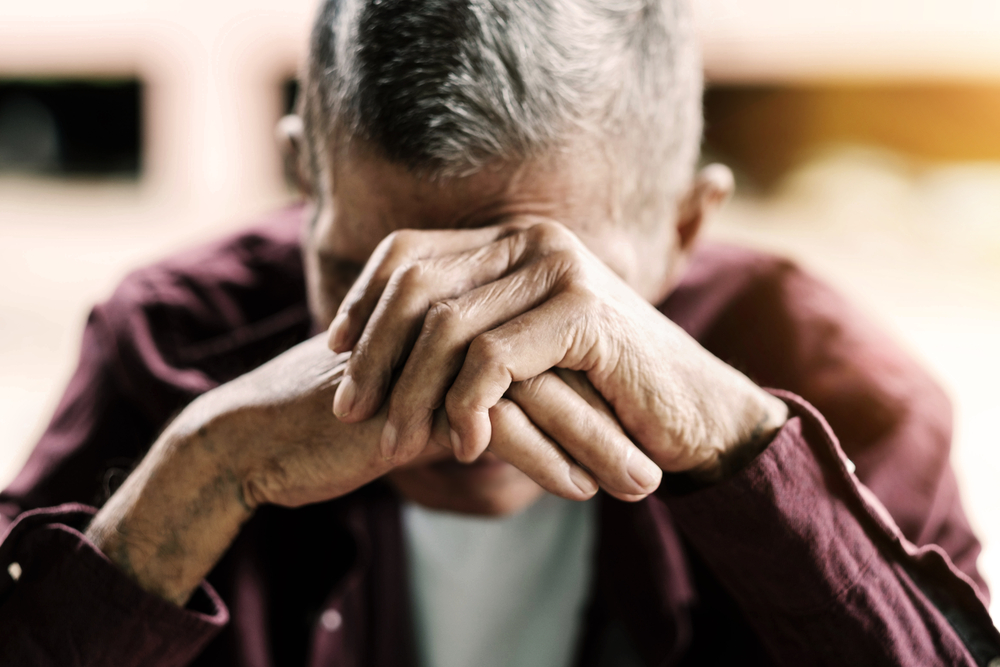What is seasonal affective disorder?
Seasonal affective disorder (SAD) is a type of depression that has a seasonal pattern. The episodes of depression tend to occur at the same time each year, usually during the winter.
As with other types of depression, 2 of the main symptoms of SAD are a low mood and a lack of interest in life. Other symptoms of SAD include:
- being less active than normal
- sleeping more
Read more information about the symptoms of seasonal affective disorder.
Winter depression
SAD is sometimes known as "winter depression" because the symptoms are more apparent and tend to be more severe at this time of the year.
The symptoms often begin in the autumn as the days start getting shorter. They're most severe during December, January and February.
In most cases, the symptoms of SAD begin to improve in the spring before disappearing.
What causes SAD?
The exact cause of SAD is not fully understood, but it's thought to be linked to reduced exposure to sunlight during the shorter days of the year.
Sunlight can affect some of the brain's chemicals and hormones. However, it's not clear what this effect is. One theory is that light stimulates a part of the brain called the hypothalamus that controls mood, appetite and sleep. These things can affect how you feel.
In people with SAD, a lack of sunlight and a problem with certain brain chemicals stops the hypothalamus from working properly. The lack of light is thought to affect:
- the production of the hormone melatonin
- the production of the hormone serotonin
- the body's circadian rhythm (the body's internal clock, which regulates several biological processes during a 24-hour period)
Read more about the effects of sunlight on melatonin, serotonin and the body's circadian rhythm.
Diagnosing SAD
If you have the symptoms of SAD, visit your doctor. They may carry out an assessment to check your mental health.
You may be asked about your mood, lifestyle, eating and sleeping patterns and any seasonal changes in your thoughts and behaviour.
Read more about diagnosing seasonal affective disorder.
Treating SAD
As with any type of depression, SAD can be difficult to live with. It can make you feel tired, stressed and unhappy. However, it can usually be successfully treated.
Light therapy is often used to treat SAD. It involves sitting in front of, or beneath, a lightbox. Lightboxes produce a very bright light. They come in a variety of designs, including desk lamps and wall-mounted fixtures.
Before using a lightbox to treat SAD, speak to your doctor and check the manufacturer’s instructions.
Depending on the nature and severity of your symptoms, talking therapies such as cognitive behavioural therapy (CBT) or medication such as antidepressants may also be recommended by your doctor.
They'll recommend the most suitable treatment programme for you, which may involve using a combination of treatments.
Read more about how seasonal affective disorder is treated.
Seasonal affective disorder symptoms
The symptoms of seasonal affective disorder (SAD) are similar to those of normal depression, but they occur at a particular time each year.
Most people’s symptoms start in the autumn or winter and improve in the spring.
The symptoms of SAD are usually fairly mild at the start of the autumn and get worse as the winter progresses and the amount of sunlight decreases. However, the nature and severity of the symptoms of SAD will vary from person to person.
Some people with SAD experience recurring episodes of unipolar depression, while others may find they experience mild episodes of bipolar depression.
Unipolar depression is where you only experience depressive symptoms. Bipolar depression involves depressed periods (lows) followed by manic periods (highs) where you feel happy, energetic and much more sociable.
SAD symptoms
As with all forms of depression, the main symptoms of SAD include a low mood and a loss of pleasure or interest in normal, everyday activities. Other depressive symptoms can include:
- feeling irritable
- feelings of despair
- feelings of guilt and worthlessness
- low self-esteem
- indecisiveness
- tearfulness
- feeling stressed or anxious
- a reduced sex drive
In addition to the above symptoms you may also:
- be less active than normal
- feel tired and sleep more than normal (hypersomnia)
- feel lethargic (lack energy)
- find it difficult to concentrate
- have an increased appetite and eat more than usual (hyperphagia)
For many people, SAD can be a difficult condition to live with and it can have a significant effect on your day-to-day life. However, SAD can be successfully treated.
Read more about treating seasonal affective disorder.
What causes seasonal affective disorder?
The exact cause of seasonal affective disorder (SAD) is unknown. The symptoms of depression are thought to be linked to the shorter days of the year during the winter months when the body has less exposure to sunlight.
Experts across the world have been researching SAD since the beginning of the 1980s and have developed several theories about what may trigger the condition. These are discussed below.
Hypothalamus
The amount of sunlight you receive affects some of your body's hormones and brain chemicals. However, the effect that sunlight has on the brain is not fully understood.
One theory is that light stimulates a part of the brain called the hypothalamus, which controls your mood, sleep and appetite. These can affect how you feel.
In people with SAD, lack of sunlight and a problem with certain chemicals in the brain, prevents the hypothalamus from working properly. The lack of light is thought to:
- affect the production of the hormone melatonin
- affect the production of the hormone serotonin
- disturb your circadian rhythms
Melatonin
Melatonin is a hormone that affects sleep. It's produced by a small gland in your brain called the pineal gland. When it's dark, the pineal gland produces melatonin to make you feel sleepy.
When it's light, the retina (the light-sensitive layer of cells at the back of your eye) converts the light into an electrical impulse that travels to the hypothalamus. The hypothalamus sends a message to several of the body's glands, including the pineal gland which produces less melatonin.
During the winter months, some people produce amounts of melatonin that are higher than normal, resulting in SAD symptoms such as sleepiness and low energy levels.
Serotonin
Serotonin is another hormone that affects mood, appetite and sleep. It's also a neurotransmitter, which means that it transmits messages between nerve cells. Fewer hours of sunlight means that less serotonin is produced.
If you have SAD, your serotonin levels may be lower than average during the winter. This may result in the messages between nerve cells not being transmitted effectively and causing the symptoms of SAD, such as feeling down.
Circadian rhythm
Your body uses light sources, such as the sun, to time various important biological functions and processes, including your mood, sleep, appetite, digestion and energy levels.
This regulation of the body's functions is known as a circadian rhythm and it usually occurs over a 24-hour period. However, a lack of sunlight can sometimes disrupt the body's internal clock, leading to the symptoms of SAD such as depression and low energy levels.
Other causes
Many different causes and contributing factors are associated with depression, some of which may also contribute to SAD. Possibilities include:
- genetic and family factors: a family history of depression could mean you inherit particular genes that make depression more likely
- adverse childhood experiences: such as neglect or physical or sexual abuse
- personality: for example, you may be someone who's naturally quite anxious
- psychological factors: this relates to how the brain functions, such as your emotions and the way that you think about things
- social factors: your relationships with other people, for example, whether or not you have close friends
Diagnosing seasonal affective disorder
If you have the symptoms of seasonal affective disorder (SAD), visit your doctor. If you're diagnosed with the condition, effective treatments are available.
Your doctor may carry out a psychological assessment to check your mental health. During the assessment, you may be asked questions about:
- your mood
- your lifestyle
- your eating patterns
- your sleeping patterns
- any seasonal changes in your thoughts and behaviour
- whether there's anything in your personal history that may contribute to a depressive disorder, such as child abuse
- whether there's anything in your family history that may contribute to a depressive disorder, such as a family history of depression
Your doctor may also carry out a brief physical examination to check for any other possible causes of your symptoms.
Diagnosing depression
2 major classification systems are used to diagnose depression. Your doctor may use one of these systems to help diagnose SAD. The classification systems consider:
- the symptoms that you have
- how severe your symptoms are
- how long you've had symptoms
- how your symptoms progress
- how much your symptoms prevent you from carrying out normal activities
You may be diagnosed with a level of depression that's mild, moderate or severe.
Seasonal depression
SAD is often difficult to diagnose because there are many other types of depression that have similar symptoms. Therefore, it may take several years before you and your doctor realise that your symptoms are forming a regular pattern.
A diagnosis of SAD will depend on whether:
- you have had symptoms during the same seasons for 2 or more years in a row
- your periods of depression are followed by periods without depression
- there are any other obvious explanations or causes for your seasonal mood changes
Treatment for seasonal affective disorder
Seasonal affective disorder (SAD) can usually be successfully treated using various treatments, such as cognitive behavioural therapy (CBT), antidepressants and light therapy.
Depending on the nature and severity of your symptoms, your doctor will recommend the most suitable treatment option for you. This may involve using a combination of treatments to get the best results.
Light therapy is a popular treatment for SAD. There's no strong evidence to support the long-term benefits of using light therapy to treat SAD, although research does suggest that it may have a positive short-term effect.
Psychosocial treatments
Psychosocial treatments focus on both psychological aspects (how your brain functions) and social aspects (how you interact with others). Some possible psychosocial treatments are described below.
Cognitive behavioural therapy
Cognitive behavioural therapy (CBT) starts with the idea that your problems are often created by you. It's not the situation itself that is making you unhappy, but how you think about it and how you react to it.
Changing how you think about certain situations will help you change your behaviour so that the situation no longer makes you feel unhappy.
CBT involves having a number of sessions with a specially trained therapist, usually over several weeks or months. Your programme could be:
- an individual programme of self-help
- a programme designed for you and your partner (if your depression is affecting your relationship)
- a group programme that you complete with other people who are in a similar situation
- a computer-based CBT programme that is tailored to your needs and supported by a trained therapist
Read more about CBT.
Counselling and psychodynamic psychotherapy
Counselling is another type of talking therapy that involves talking to a trained counsellor about your worries and problems.
Read more about counselling.
During psychodynamic psychotherapy, you discuss how you feel about yourself and others and you talk about experiences in your past.
The aim of the sessions is to find out whether anything in your past is affecting how you feel today.
Read more about psychotherapy.
Antidepressants
Antidepressants are often prescribed to treat depression and they are also sometimes used to treat SAD when the symptoms are severe.
Selective serotonin reuptake inhibitors (SSRIs) are the preferred type of antidepressant for treating SAD. They increase the level of the hormone serotonin in your brain which helps to lift your mood.
If you are prescribed antidepressants, be aware that:
- it can take 4 to 6 weeks for the medication to take full effect
- it's important to take the medication as prescribed and to continue taking it even if you start to feel better
- some antidepressants have side effects and may interact with other types of medication that you are taking
An upset stomach is the most common side effect of antidepressants. See the information leaflet that comes with your medication for a full list of possible side effects.
The evidence that antidepressants are effective in treating SAD is limited. They're thought to be most effective if they're taken at the start of winter (before the symptoms appear) and continued until spring.
Read more about antidepressants.
Light therapy
For some people with SAD, using light therapy can help improve their mood considerably. It involves sitting in front of, or beneath, a lightbox.
Lightboxes are special lamps that come in a variety of designs, including desk lamps and wall-mounted fixtures. They produce a very bright light. Light intensity is measured in lux – the higher the lux, the brighter the light.
Before using a lightbox to treat SAD, check the manufacturer’s information and instructions regarding:
- whether the product is suitable for treating SAD
- the light intensity you should be using
- how long you need to sit in front of the light
When buying a lightbox, make sure that you choose one that's been produced by a fully certified manufacturer and is medically proven to treat SAD. The SAD Association can provide a list of recommended manufacturers.
Very bright light may not be suitable if you:
- have an eye problem or your eyes are particularly sensitive to light
- are taking certain types of medication, such as antidepressants
- have epilepsy – a condition that causes seizures (fits)
Speak to your doctor if you're unsure about the suitability of a particular product.
How light therapy works
Light therapy is thought to work by simulating the sunlight that's missing during the darker winter months.
The additional light encourages your brain to reduce the production of melatonin (the hormone that makes you sleepy) and increase the production of serotonin (the hormone that affects your mood).
Altering the levels of melatonin and serotonin that are released into your body during the winter months can help to ease your symptoms of SAD.
However, this is based on the assumption that the condition is caused by a lack of light and the effect that this has on the hormones that are released in your brain.
Research into light therapy
There's mixed evidence regarding the overall effectiveness of light therapy. It's difficult to compare the research that's been carried out in this area because a variety of light sources were used and clinical trials (medical tests) were often conducted over short periods of time.
However, several studies have concluded that light therapy is effective, particularly if it's used first thing in the morning. It's thought that light therapy is best for producing short-term results. This may mean that it will help to relieve your symptoms but that you'll still be affected by SAD next winter.
Side effects of light therapy
It's rare for people using light therapy to have side effects. However, in rare cases, you may experience:
- mild agitation or irritability
- headache
- sleeping problems (avoid using light therapy during the late evening)
Visit a doctor if you experience any side effects while using light therapy.





